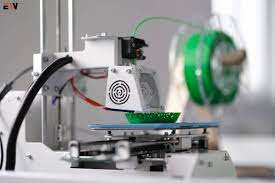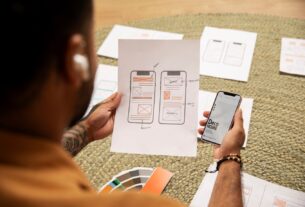In the fast-paced world of product development and innovation, mastering the art of rapid prototyping is essential for staying ahead of the curve. Rapid prototyping is a dynamic process that allows designers and engineers to quickly transform ideas into tangible prototypes, facilitating swift iteration and refinement. In this comprehensive guide, we will delve into the intricacies of rapid prototyping, exploring its benefits, techniques, and best practices to empower you on your journey of innovation.
I Understanding Rapid Prototyping:
Rapid prototyping is a methodology that involves creating a scaled-down model of a product or part to test its design, functionality, and feasibility unlike traditional methods that may take weeks or even months to produce a prototype, rapid prototyping leverages cutting-edge technologies to accelerate the process. This approach is particularly advantageous in industries where time-to-market is a critical factor.
II. Benefits of Rapid Prototyping:
A. Speed and Time Efficiency:
One of the primary advantages of rapid prototyping is its ability to significantly reduce the time required for product development. Traditional prototyping methods involve time-consuming processes, such as mold creation and tooling. Rapid prototyping, on the other hand, allows for the swift creation of prototypes using 3D printing, CNC machining, or other advanced techniques.
B. Iteration and Design Refinement:
Rapid prototyping facilitates quick iterations, enabling designers to test multiple versions of a product and make necessary adjustments on the fly. This iterative process is crucial for refining designs, identifying flaws, and optimizing functionality before moving on to the final production phase.
C. Cost Savings:
While the initial investment in rapid prototyping technology might seem significant, it ultimately leads to cost savings in the long run. By catching design flaws early in the process and avoiding expensive tooling changes, companies can reduce the overall cost of product development.
III. Techniques of Rapid Prototyping:
A. 3D Printing:
3D printing, also known as additive manufacturing, is a cornerstone of rapid prototyping. This technique involves layering materials, such as plastic or metal, to build a three-dimensional object based on a digital model. 3D printing is versatile, allowing for the creation of intricate and complex prototypes with relative ease.
B. CNC Machining:
Computer Numerical Control (CNC) machining is a subtractive manufacturing method used in rapid prototyping. It involves cutting or milling material from a solid block to create a prototype. CNC machining is ideal for producing high-precision prototypes with a wide range of materials, including metals and plastics.
C. Laser Cutting:
Laser cutting is a rapid prototyping technique that uses a focused laser beam to cut through materials, creating precise shapes and patterns. This method is particularly effective for producing prototypes with flat or sheet materials, and it is widely used in industries such as electronics and packaging.
D. Stereolithography (SLA):
Stereolithography is an additive manufacturing process that uses a liquid resin cured by ultraviolet light to build up layers and create a 3D object. SLA is known for its high level of detail and accuracy, making it suitable for creating prototypes with intricate geometries.
IV. Best Practices in Rapid Prototyping:
A. Clearly Defined Objectives:
Before embarking on a rapid prototyping journey, it is crucial to clearly define the objectives of the project. Understanding the goals and requirements will guide the prototyping process and ensure that the final product aligns with the desired outcome.
B. Foster Collaboration:
Effective communication and collaboration among team members are vital for successful rapid prototyping. Bringing together designers, engineers, and stakeholders fosters a dynamic exchange of ideas, leading to innovative solutions and streamlined development.
C. Embrace Iteration:
Rapid prototyping is inherently iterative. Embrace the process of continuous refinement and iteration, allowing room for improvements based on feedback and testing results. Each iteration brings the product closer to perfection.
D. Test Early and Often:
Testing should be an integral part of the rapid prototyping process. Conducting early and frequent tests allows for the identification of potential issues and improvements, ensuring that the final product meets the desired standards.
E. Select the Right Materials:
Choosing the appropriate materials for prototyping is crucial for achieving the desired characteristics and functionality of the final product. Consider factors such as strength, durability, and cost when selecting materials for your prototypes.
V. Case Studies of Successful Rapid Prototyping:
A. SpaceX: Revolutionizing Space Exploration
SpaceX, founded by Elon Musk, is renowned for its innovative approach to space exploration. The company utilizes rapid prototyping extensively to develop and test components for its Falcon and Starship rockets. By rapidly iterating and testing prototypes, SpaceX has achieved significant advancements in space technology.
B. Apple: Iterative Design Excellence
Apple is synonymous with sleek and cutting-edge product design. The company’s success can be attributed, in part, to its commitment to rapid prototyping. Apple engineers create multiple prototypes to test various design elements, ensuring that the final product is not only aesthetically pleasing but also highly functional.
VI. Future Trends in Rapid Prototyping:
A. Integration of Artificial Intelligence:
The integration of artificial intelligence (AI) in rapid prototyping processes is expected to become more prevalent. AI algorithms can analyze design data, predict potential issues, and optimize designs, leading to more efficient and effective prototyping.
B. Advancements in Materials:
Ongoing research and development in materials science will continue to yield new materials that are better suited for rapid prototyping. Innovations in materials will enhance the strength, flexibility, and overall performance of prototypes.
C. Decentralized and Remote Prototyping:
With the rise of remote work and decentralized teams, the future of rapid prototyping may involve collaborative platforms that allow team members from different locations to contribute to the prototyping process in real time.
Conclusion:
Mastering the art of rapid prototyping is a transformative journey that empowers innovators to bring their ideas to life with unprecedented speed and efficiency. By understanding the benefits, techniques, and best practices of rapid prototyping, individuals and organizations can navigate the complex landscape of product development with confidence. As technology continues to advance, the future holds exciting possibilities for the evolution of rapid prototyping, propelling us into a new era of innovation and creativity.




